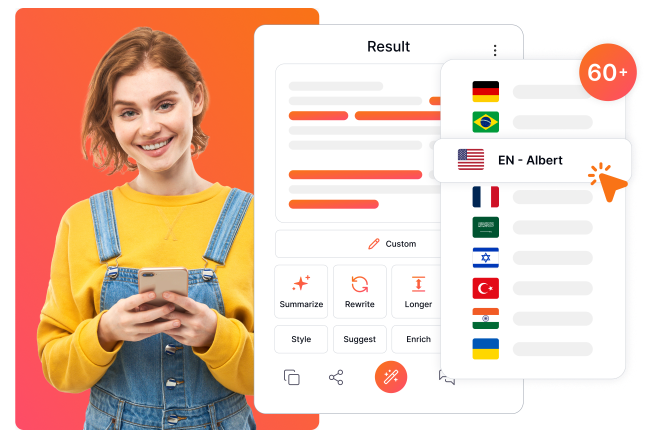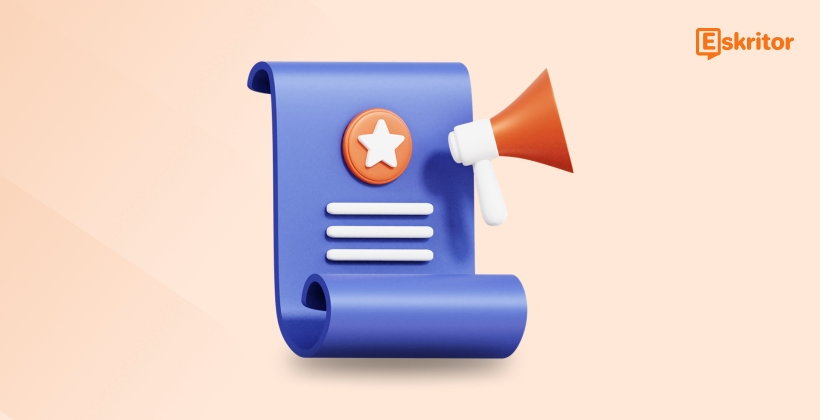The Role of AI in Modern Editing Practices
The Role of AI in Modern Editing Practices
Blog Article
Top AI Writing Tools to Boost Productivity
Artificial intelligence (AI) writing engineering has changed rapidly in the last decade, reshaping the way in which we create and communicate with published content. From syntax modification resources to AI-generated books, the possibilities seem limitless. But where precisely is this technology heading? Let's examine the innovations, challenges, and potential future of ai grammar checker.

How AI Publishing Engineering Performs Nowadays
At its key, AI publishing engineering utilizes Natural Language Handling (NLP) and equipment learning. These systems enable versions to know, make, and improve human language. Instruments accessible today excel at tasks like:
1. Content Creation
AI has reached a point where it could produce total blog posts, social media marketing captions, and also information articles. Some versions are capable of mimicking individual writing models therefore effortlessly that unique between AI- and human-written content is becoming increasingly difficult.
2. Grammar and Type Recommendation
AI-powered writing assistants don't only always check for syntax and punctuation mistakes; they also offer suggestions to improve tone, clarity, and syntax, making complicated writing available to a broad audience.
3. Sentiment Examination
AI may assess the mental tone of a bit, enabling corporations to assess how their communications may resonate with readers. That is specially helpful in marketing and customer interaction.
The Current Developments in AI Writing Engineering
Many traits are surrounding the following period of AI-powered writing methods:
• Personalization
AI writing engineering is increasingly effective at tailoring content to individual preferences. Models can conform to a user's writing style, ensuring the production thinks authentic.
• Multilingual Features
Several AI resources are growing their worldwide achieve by offering increased translation features and support for multiple languages.
• Increased Research Functions
AI methods today get the ability to analyze large amounts of knowledge and present fact-checked, well-researched publishing in seconds, simplifying the method for experts in industries like law, finance, and journalism.
What the Potential Keeps for AI Writing Technology
1. Increased Creativity
While recent AI is good at generating material, their imagination is still limited to patterns within their education data. Future AI isn't just estimated to assist but to create original, topical works that challenge human imagination.
2. Easy Cooperation
Envision an AI that works along with you in real-time, finishing your sentences, doing live edits, and even brainstorming ideas. AI writing methods might shortly become co-authors, enabling imagination to movement uninterrupted.
3. Moral and Accessible Style
With rising concern about plagiarism, misinformation, and bias, designers will work toward more transparent AI training techniques and moral implementation. Potential tools will likely present more comprehensive citations and steps to ensure accountability.
Problems and Concerns
The progress of AI publishing technology isn't without hurdles, including:
• Honest Problems

Who owns material developed by AI? How do we assure AI-generated content isn't spreading misinformation? These debates remain unresolved.
• Human-AI Balance
Can AI match human creativity or entirely change specific jobs? Several writers and artists be worried about their relevance within an AI-driven world.
• Availability Split
Not absolutely all businesses or parts have similar access to cutting-edge AI methods, increasing issues concerning the affect with this technology on worldwide inequality.
Adjusting the Way We Create
AI writing engineering remains in their infancy compared to its potential. Whether you're a student developing documents, a content marketer targeting unique readers, or perhaps a author seeking enthusiasm, AI instruments can continue to revolutionize the writing process. The following decade claims breakthroughs that mix human ingenuity with equipment intelligence, developing a future where publishing is better, accessible, and impactful than ever before.
Report this page